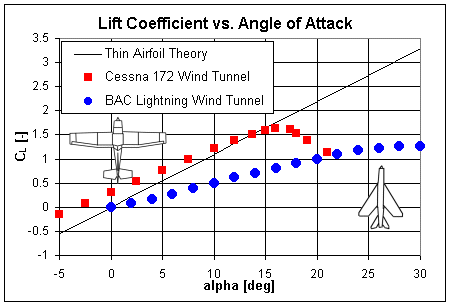I realize this is probably a drawn out subject, but I could really use a better understanding of the relationship between flight path angle, aoa, attitude, and glide path (slope)...
Waterskiing. Pause for a moment and picture a man water skiing. With that mental image consider the following:
- Ski's are the wing. Being thin their chord line is easily imaginable.
- The water represents the relative wind, and in this 2D representation, also the flight/glide path.
- The angle between the ski's and the water represents angle of attack.
With the above mental image securely fixed in our brains we can begin to understand how angle of attack and speed correlate. What happens as the water skier is first pulled off by the boat? Going very slow he angles his ski tips way back (big angle of attack). As speed builds up his skis flatten relative to the water (smaller angle of attack).
Taking this a step further, what about when he's done performing and let's go of the rope? Starting at a high speed, his skis will be at a low angle. With the boat no longer supplying the power, drag will begin to overcome him and speed will slowly bleed away. As this happens the ski's angle of attack continues to increase until finally there isn't enough speed left. His ski's are now beyond critical angle of attack and subsequently he stalls and sinks.
Now that we, hopefully, have a great mental image of how speed, angle of attack, and stall interact; let's play with this flight path idea. First, let me tell you that flight path and glide path are the same thing. The word glide merely tells us that we are in a power off flight condition.
Alright, now that that is handled, go back and reread our 3 item list above and refresh this water skiing mental image because we are about to take it and break all scientific law with it! The water is the flight path and the relative wind, yes?
Well, what if the top of the water could be imagined as a string that we are holding taught between our two hands? The man skiing on the water will remain at his current speed, with ski's at their current angle of attack (angle relative to the water/string), and we can imagine rotating this string. We are breaking scientific law and imagining that we, the gods we are, can tilt water! eek
If we can do this we can affix a great mental image of how AOA and flight path work. Say we tilt the string (top of the water remember) to a 15 degree angle relative to earth. The skier remains on top of the string/water with his ski's at the same AOA remember. The difference now is he is skiing up hill at a flight path angle of 15 degrees, but still at the same arbitrary angle of attack that we first imagined him having.
With the above we can now define attitude and flight path:
Flight path: The path the aircraft is actually traveling relative to the surface of the earth.
Flight attitude: The angle of the flight path PLUS the angle of attack will give you the aircrafts pitch attitude relative to the surface of the earth. For example: Descending at a 5 degree angle (-5) plus flying at a 12 degree angle of attack (+12) gives a pitch attitude relative to earth of 7 degrees. (-5 + 12 = 7)
I believe that non-technically wraps up each of your questions. Hope I didn't hurt anyones feelings by breaking laws of physics with my imagination. Happy holidays JC.


